White avian species captivate not only with their pristine feathered appearance but also with their unique lifestyles.
From majestic gyrfalcons to charming snow buntings and elegant smews, these winged beings are easily recognizable, yet their presence is not ubiquitous.
Table of Contents
Encountering a white bird evokes a sense of tranquillity, refinement, and joy.
White, symbolizing light and goodness, has contributed to the development of numerous superstitions surrounding these magnificent creatures.
However, this article does not delve into superstitions; instead, its purpose is to explore the lives and flourishing of both small and large white birds.
By delving into these aspects, we may uncover the reasons behind the plethora of beliefs and myths woven around these stunning aviators.
Without any further delay, let us delve into the contents of this article!
Small and Big White Birds Around the World
Cattle Egrets
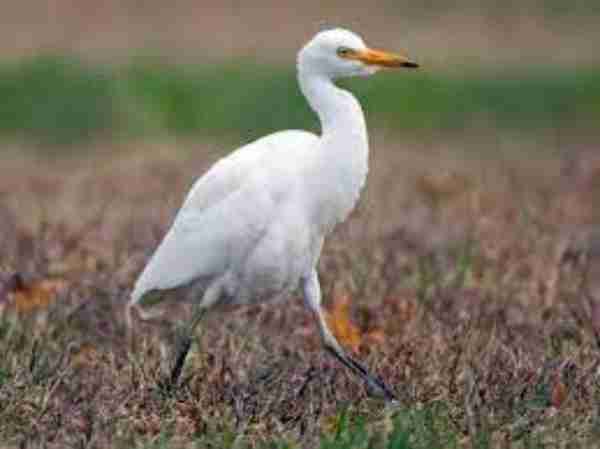
Cattle egrets are stout herons measuring 18-22 inches in length. They weigh between 9 ½ and 18 ounces, with a wingspan ranging from 34 ½ to 38 inches. Compared to other egret species, they possess a sturdy and relatively short neck, while their posture appears bent. In their non-breeding phase, cattle egrets exhibit predominantly white plumage, sporting a yellow beak and greyish-yellow legs. However, during the breeding season, they develop golden, yellowish feathers on their chest, back, and head.
Indigenous to southern Spain and Africa, cattle egrets can also be found across North America, Eurasia, Australia, and to a lesser extent, South America. These white birds primarily inhabit wetlands, forests, and grasslands.
Given their highly social nature, cattle egrets often establish their nests in the proximity of colonies inhabited by other small heron species. They construct their nests in tall trees, shrubs, or occasionally small trees. Both parents contribute to building the shallow and disorganized nest bowl using twigs and sticks. Clutches typically consist of 2-4 eggs, which undergo an incubation period of approximately four weeks.
Cattle egrets predominantly feed on large insects, particularly grasshoppers, flies, and crickets. They also consume frogs, moths, and spiders. On occasion, they may include fish and snakes in their diet.
Related Article: Behold 10 Beautiful White Birds with Long Beaks (Illustrated with Pictures.)
Mute Swans

The adult mute swan boasts a length of 49-67 inches, with a wingspan spanning 79-94 inches. Standing tall at a height of 47 inches, this bird is truly remarkable. Mute swans are among the heaviest white birds capable of flight, with males averaging around 26 pounds and females weighing approximately 33 pounds. They exhibit a distinctive appearance, with their plumage entirely white and their neck and head adorned in shades of dirty brown or orange.
Mute swans display remarkable adaptability, inhabiting a wide range of aquatic environments, including coastal estuaries, urban lakes, and agricultural ponds. In the Pacific Northwest and from the southern regions of New England to Virginia, they select freshwater, saltwater, and brackish water ponds as nesting sites.
Nesting locations for mute swans can vary, ranging from small peninsulas along densely vegetated coastlines to small or medium-sized islands. They construct their nests using twigs, cattails, reeds, cordgrasses, rushes, sedges, grasses, bulrushes, and occasionally stones. The nest cup may contain decomposing plant material.
Swans primarily consume aquatic plants, along with the molluscs that adhere to the foliage. They also incorporate worms, small fish, and frogs into their diet. These magnificent white birds can thrive in fields with short-cropped grass and are known to graze in large grassy areas.
White Terns

The white tern, a remarkably graceful and delicate seabird, measures 11-12.9 inches in length. It possesses a wingspan ranging from 25.9 to 30.7 inches and weighs between 3.5 and 4.9 ounces. This avian beauty boasts flawless all-white plumage, and its elegance is accentuated by the black rings surrounding its eyes, creating an illusion of increased size when viewed from certain angles.
Tropical and subtropical regions of the South Atlantic, Indian, and Pacific Oceans serve as breeding grounds for the white tern. These marine birds navigate the deep waters in search of food while inhabiting areas in proximity to coral-rich islands that support breeding vegetation.
Remarkably, white terns do not construct nests. Instead, the female lays a single egg per clutch in any suitable depression nearby, relying on the surrounding environment for protection.
The white tern’s diet primarily consists of fish, with a particular preference for flying fish. They also consume crabs and squid as part of their feeding habits.
Related Article: An In-Depth Guide to the 13 Top Most Birds of Prey in North Carolina.
Smews
Smews, belonging to the sawbill duck subfamily, are typically 14.9–17.3 inches long. They possess a wingspan of 22–27.1 inches and weigh between 15.8 and 22.9 ounces. These medium-sized white birds display distinct characteristics. Male smews are entirely white, while females exhibit white plumage only at the neck and throat, resembling female Goldeneyes. Additionally, smews feature black wing panels that further enhance their appearance.
Native to Eurasia, smews migrate to the western Aleutians during the autumn and winter seasons. Although rare, they occasionally venture to the Pribilofs and can be accidentally spotted in various U.S. states, including Massachusetts, Oregon, Washington, the Mississippi River Valley, California, and the Great Lakes area. They primarily inhabit lakes, rivers, and bays.
When it comes to nesting, these white birds prefer areas near water bodies such as lakes, rivers, or ponds. They often utilize abandoned nests of woodpeckers or other types of tree cavities.
Smews are adept divers and rely on their beaks to catch fish. They also consume a variety of aquatic life, plant matter, seeds, small fish, crabs, snails, and the pupae or larvae found beneath rocks.
Tundra Swans
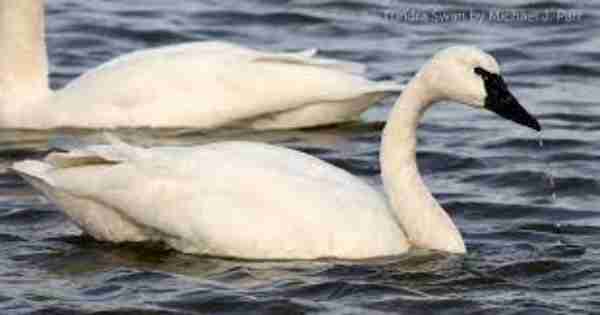
Tundra swans typically stand at a height of approximately 3 feet, with a wingspan ranging from 6 to 7 feet. They weigh between 13 and 20 pounds. These majestic birds are adorned with pristine white feathers. The base of their bill often exhibits a yellow patch, complemented by a predominantly black colouration. Their feet and legs also sport the same black hue.
Tundra swans can often be found in close proximity to shorelines, and they choose the Arctic tundra as their nesting grounds. They inhabit various bodies of water, including slow rivers, shallow lakes, coastal estuaries, and flooded fields, not only during the winter but also throughout their migratory journeys.
Both male and female tundra swans collaborate in constructing their nests, forming mounds using grasses, tundra plants, sedges, moss, and lichens.
Primarily herbivorous, tundra swans feed on water plants and their roots. However, they also incorporate certain arthropods, shellfish, and worms into their diet.
Related Article: Do Birds Eat Maggots? [Are Maggots Harmful to Birds?
Red-Billed Tropicbirds
The red-billed tropicbird typically measures 35–41 inches in length, including its impressive 18–22 inches tail streamers. Without the tail streamers, it spans 19 inches in length, while its wingspan ranges from 39 to 42 inches. With predominantly white plumage, this bird displays striking black patterns on its back and wings. It also sports a black mask that gives it a resemblance to a tern.
The red-billed tropicbird can be found in the Neotropics, eastern Pacific, Indian seas, and tropical Atlantic regions. While it is quite rare to observe this unique seabird from the land, it is often spotted near the rocky shores of islands.
For nesting, the red-billed tropicbird utilizes scrapes on cliff faces, providing them with convenient takeoff points.
Despite having limited swimming abilities, this white bird sustains itself by feeding on squid and fish.
Snow Goose

The snow goose typically weighs around 7.1 pounds and measures approximately 31 inches in length, although some individuals can reach up to 9.9 pounds in weight. Their wingspan varies between 53 and 65 inches. These remarkable birds have a lifespan of up to 17 years, but they do not begin breeding until they are 3 or 4 years old.
The snow goose is found in the Arctic and high Arctic Islands, where it spends its winters in coastal saline bays, marshes, freshwater marshes, wet grasslands, farms, and fields.
For nesting, snow geese prefer locations near streams or ponds in the subarctic and arctic tundra. The female selects a nesting site with the assistance of the male, typically hidden by vegetation, rocks, or small bushes. Nest-building materials include marine lyme grass, birch twigs, leaves, eelgrass, sea-lyme grass, willow, and seaweed.
Snow geese primarily feed on the seeds, roots, and leaves of various wild grass species. They also consume bulrushes, sedges, horsetail, and other plant varieties.
Related Article: Do Birds Eat Frogs? The Culinary Preference of Birds for Frogs
Ivory Gulls
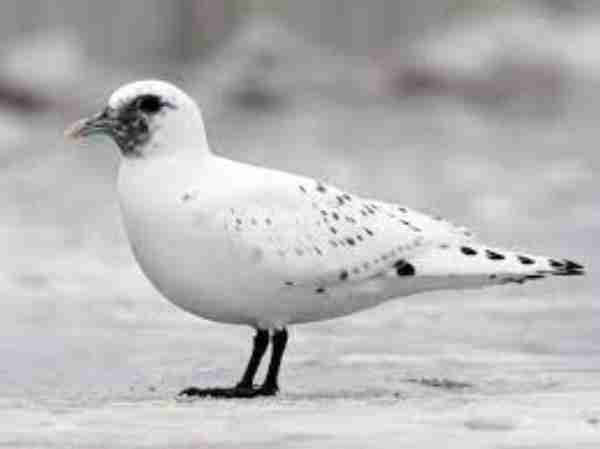
The ivory gull stands out with its stunning pure white plumage, complemented by its black legs. Both males and females share similar appearance, and adult individuals measure around 17.3 inches in length, weighing approximately 14.1–17.6 ounces.
This remarkable bird, known for its white beauty, can be found in Greenland, Eurasia, and the northern regions of North America. It breeds in the Arctic and is commonly observed in the northernmost areas of the High Arctic. It frequents ice margins and packs ice, particularly around headlands and islands.
The ivory gull exhibits great adaptability in choosing nesting sites. These exquisite white birds select nesting spots on islands, high mountains, and inland cliffs. They utilize a variety of materials in constructing their nests, including algae, driftwood, down, lichen, feathers, grass, seaweed, and mud.
When it comes to their diet, ivory gulls primarily consume marine invertebrates and fish that are found near pack ice locations. Additionally, they scavenge for the remains of polar bears and remnants left by human hunters.
White Cockatoos
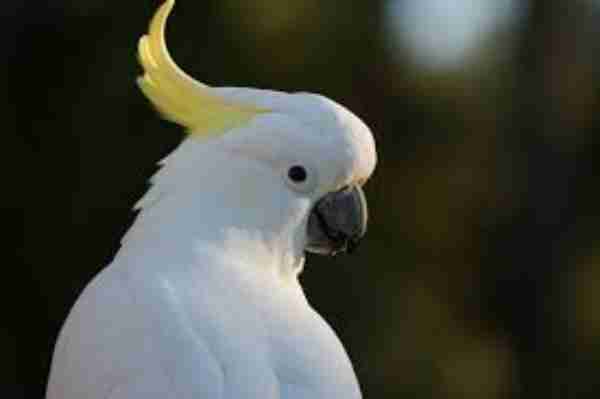
The white cockatoo is approximately 18 inches long, with large males weighing around 28 ounces and smaller females weighing around 14 ounces. The male white cockatoo typically has a larger head and beak compared to the female, while the colour of their eyes can be either brown or black.
These beautiful birds are found in the Indonesian Maluku Islands, specifically on islands such as Bacan, Halmahera, Kasitura, Ternate, Mandioli, and Tidore. They inhabit open forests, woodlands, agricultural areas, and mangrove swamps. White cockatoos are known for their affinity for wetland environments.
When it comes to nesting, white cockatoos construct their nests at heights ranging from 16 to 100 feet above the ground. They seek out large tree cavities and use materials such as wood shavings, sawdust, or other suitable decomposed substances.
The diet of white cockatoos mainly consists of a variety of nuts, fruits, and seeds. They have a particular fondness for durian, langsat, rambutan, and papaya. Additionally, they may consume insects as part of their diet.
Little Egrets
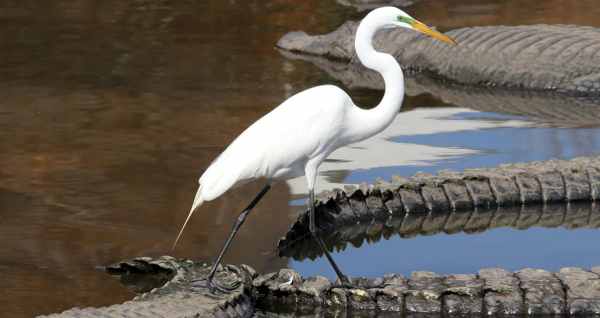
Despite their name, cattle egrets are actually larger egrets, measuring 21-26 inches in length. They weigh between 12 and 19 ounces and have a wingspan of 35-42 inches. These egrets have black legs and beaks, with pale yellow feet.
The distribution of little egrets spans across every continent except South and North America. In Africa, Southeast Asia, and Australia, they are year-round residents, while in Europe, they are only present during the winter as visitors. Little egrets are semi-aquatic birds and prefer habitats such as ponds, lagoons, flooded areas, marshes, and canals.
Similar to other egret species, little egrets nest in colonies alongside other birds. Their nests are usually found in trees or shrubs and are constructed using a variety of sticks and twigs.
White Ibises
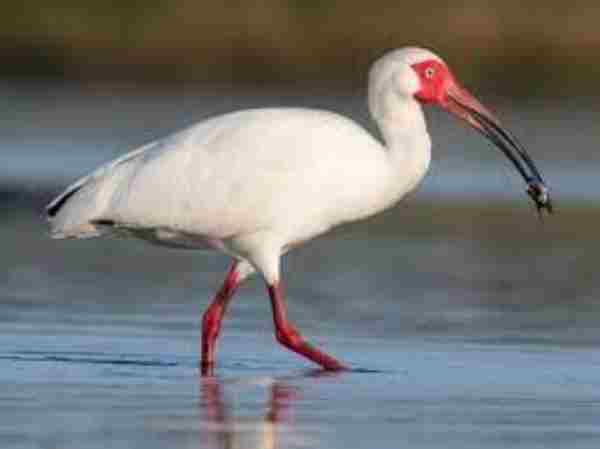
Male white ibises have a weight range of 1.9 to 2.7 pounds, while females weigh between 1.3 and 1.8 pounds. Both male and female adults have a length range of 20.8 to 27.5 inches and a wingspan of 35.4 to 41.3 inches.
White ibises are abundant in Northern, South-Western, and Eastern Australia, and they can also be found in certain regions of the United States, such as Texas, Florida, and Michigan. These white birds gather in flocks near coastal areas with freshwater and saltwater, including brackish marshes, mudflats, rice fields, lagoons, and mangrove swamps.
When it comes to nesting, white ibises typically choose locations that are 2 to 15 feet above water or the ground. They sometimes nest in mangroves, thickets, or trees. The nesting materials used by white ibises are often stolen from other pairs’ nests, including sticks, and occasionally reeds and cordgrass.
The diet of white ibises consists of fish, crayfish, crabs, insects, frogs, and snakes. They have a varied menu of aquatic and terrestrial creatures.
Related Article: 8 Birds With Talons: A Visual Guide
American Pekins

American Pekin ducks typically stand at a height of around 20 inches. The males usually weigh around 10 pounds, while the females can reach up to 9 pounds. By the age of 7 weeks, Pekin ducks have grown all their feathers and are at 90% of their adult weight. However, it takes them between 16 to 28 weeks to reach full maturity.
While American Pekin ducks are most commonly found in the United States, they are also widely distributed across various parts of the world. They inhabit habitats such as ponds, industrial and private farms, as well as parks.
Although American Pekins are capable of laying eggs in various locations, they are not averse to nesting areas provided by humans.
A balanced and nutritious diet for these ducks primarily consists of commercial feed specially formulated for geese and ducks. However, they also consume worms, leafy greens, non-citrus fruits, peas, and maize as part of their diet.
Royal Spoonbills

The Royal spoonbill can reach a height of approximately 31.4 inches. It weighs between 3 to 4.5 pounds and has an impressive wingspan of about 47.2 inches. This bird is known for its long legs, which are well-suited for wading in water.
The habitat of the Royal spoonbill spans Northern and Eastern mainland Australia. They can be found in various environments such as intertidal mud flats, shallow saltwater and freshwater marshes, and wet grasslands. Additionally, they adapt well to man-made wetlands like sewage lagoons, salt flats, reservoirs, and dams.
To create their nests, the Royal spoonbills use twigs and sticks, constructing a sturdy bowl-like structure. They line the nest with aquatic plants and leaves. Nesting locations can vary, including tree crowns above water bodies or among tall rushes and reeds.
As carnivores, these large white birds primarily feed on fish. However, they are also known to consume crabs and insects as part of their diet.
Northern Gannets
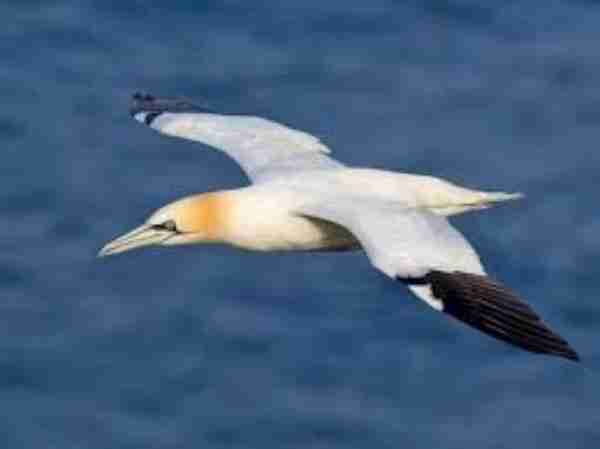
The northern gannet, the largest gannet and seabird in the western part of the Palearctic region, possesses impressive characteristics. It boasts a wingspan ranging from 67 to 71 inches, a length of 34 ½ to 39 ½ inches, and a weight of 5 to 8 pounds. Adult northern gannets exhibit a pristine snow-white plumage, with the exception of their black wingtips, while juveniles have a brownish hue. This magnificent white bird is capable of plunging into the ocean at speeds of up to 60 mph from a height of 98.4 feet.
When it comes to breeding, northern gannets gather at the Gulf Stream beaches on both sides of the North Atlantic Ocean. They are commonly found in the Gulf of Saint Lawrence and the offshore islands along the Canadian east coast. These birds prefer habitats with cliffs overlooking the ocean or small rocky islands.
The nesting behaviour of the northern gannet involves constructing nests within close proximity of 2 to 3 feet from other gannet nests. The nest structure is composed of a mound made of grass, soil, and seaweed, held together by the male’s droppings.
As for their diet, northern gannets primarily feed on fish, with occasional consumption of shrimp and squid. Fish make up the majority of their diet, demonstrating their specialization in capturing and devouring these aquatic prey.
Snowy Egrets

Snowy egrets have a length ranging from 22.1 to 26.0 inches, and they can weigh up to 13.1 ounces, with a wingspan of 39.4 inches. The male snowy egret is slightly larger than the female. This species faced a severe decline in the late 1800s due to extensive hunting, bringing it close to extinction.
Snowy egrets can be found in North, South, and Central America. In South America, these medium-sized white birds inhabit regions such as Argentina and Chile. They are also year-round residents in the West Indies and Florida. Their preferred habitats include wetlands such as marshes, riverbanks, salt marshes, lakesides, estuaries, and pools.
The nest of the snowy egret is constructed using twigs and reeds. It is flat and shallow in structure and is typically built in trees, shrubs, or even at ground level. The nest is lined with small rushes and twigs.
When it comes to their diet, snowy egrets consume a variety of food sources. This includes fish, crayfish, shrimp, fiddler crabs, small lizards, snails, baby frogs, aquatic and terrestrial insects, as well as aquatic plants.
Wood Storks
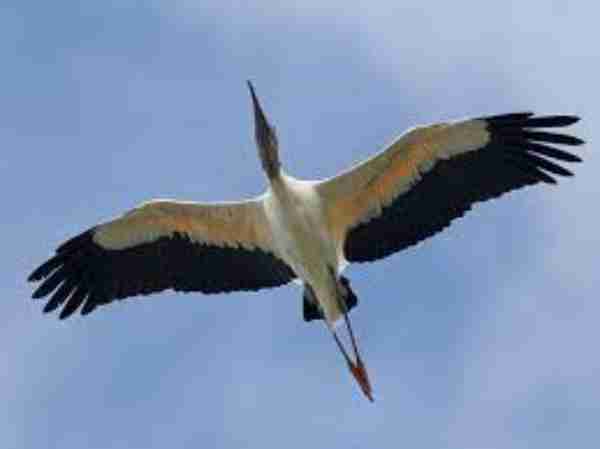
Wood storks are large birds characterized by their white plumage, which covers their long bodies ranging from 34 to 45 inches in length. They possess impressive wings that span an average of 55 to 71 inches. Male wood storks weigh between 5.5 to 7.3 pounds, while females have an average weight of 4.4 to 6.2 pounds. These birds share similarities with herons, featuring long necks and legs. However, wood storks stand out with their distinct black, featherless heads, giving them a rather intimidating appearance.
Wood storks are known to breed across a significant portion of Central and South America, including the Caribbean. They prefer tropical and subtropical regions. In the United States, they can be observed in Florida, the Carolinas, and Georgia. Wood storks thrive in diverse habitats such as mangroves, mixed hardwood swamps, cypress strands/doms, and sloughs.
When it comes to nesting, wood storks often select trees that are flooded with water ranging from 1 to 3 feet. They construct their nests using sticks and plants, creating a sturdy platform for their eggs and offspring.
Wood storks have a varied diet, including fish, crayfish, frogs, large insects, mice, and even small alligators. These prey items make up their feeding repertoire.
Trumpeter Swans

While larger male trumpeter swans can reach an impressive length of 5 feet and 11 inches, adult individuals typically measure between 4 feet and 6 inches to 5 feet and 5 inches. Both male and female swans have an average weight ranging from 15 to 30 pounds. In contrast to other swan species, the trumpeter swan stands out with its white plumage and distinctive black bill.
Trumpeter swans are commonly found in northern Alaska, the northwestern United States, and Canada, where they breed in wetlands, ice-free coastlines, and inland waterways. In some regions of Oregon, non-migratory populations have been intentionally introduced. These majestic white birds prefer habitats that include open-water wetlands, rivers, and streams.
When selecting a nesting site, trumpeter swans typically choose locations close to water. They often build their nests on existing structures such as beaver dens, muskrat lodges, beaver dams, small islands, or even artificial platforms. The base of their nests is composed of an aquatic plant mound, which is then covered with sedges, grass, or feathers.
Adult trumpeter swans primarily feed on the leaves, roots, and stems of aquatic plants. During the winter months, they may also consume terrestrial grasses and leftover crops. The diet of young swans primarily consists of small invertebrates and insects.
American White Pelicans
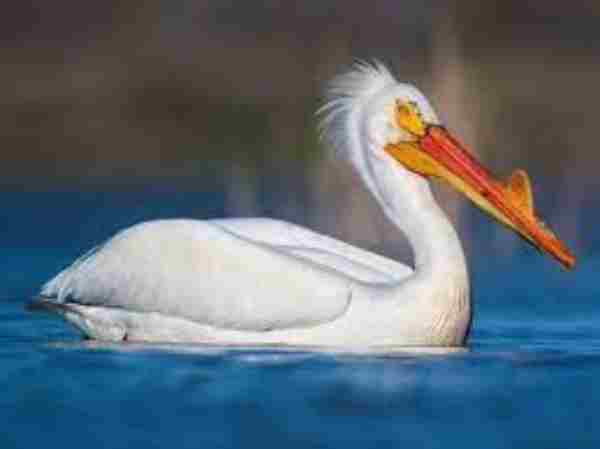
Mature male American white pelicans typically weigh between 20 and 33 pounds, while larger Palaearctic races can reach up to 24 pounds. These magnificent birds measure about 69 inches in length, with their bills ranging from 13.7 to 18.5 inches. They belong to the Pelecaniformes order, which includes pelicans.
American white pelicans can be found throughout inland regions of Northern America. With an impressive wingspan of 9 feet, they are among the largest white birds on the continent. These pelicans predominantly inhabit shallow marshes on islands, and during the winter, they migrate to estuaries, bays, and coastal areas.
When it comes to nesting, American white pelican pairs select relatively flat areas covered with gravel, dirt, or sand. In wooded areas, their nests can also be found behind bushes or trees. They construct their nests using pebbles, dirt, or plant matter to create a surrounding structure.
The American white pelican has a predominantly fish-based diet, specifically consuming “rough” fish and salamanders. They are well-adapted to catching and consuming aquatic prey to sustain their feeding habits.
White-Tailed Kites

The white-tailed kite is a bird that measures around 14 to 17 inches in length, with a wingspan ranging from 35 to 40 inches. It weighs approximately 8.8 to 13.4 ounces. The bird is predominantly white in colour, except for its shoulders and wingtips, which are black.
White-tailed kites are known to breed in Argentina and Chile, but they can also be found across various regions in America, Africa, Asia, and Europe. However, their population in the United States is relatively low. These kites prefer habitats such as savannas, open forests, desert grasslands, marshes, partially cleared areas, or cultivated fields.
When it comes to nesting, the white-tailed kite typically chooses the upper portion of tall trees, ranging from 10 to 160 feet in height. They line their nests with materials like grass, straw, or weeds, while the foundation consists of thin twigs and sticks.
The primary diet of the white-tailed kite consists of small animals, although there are rare instances where they may consume birds, insects, or reptiles.
White Doves

The white dove is a plump and medium-sized bird, measuring about 11 inches from beak to tail, and weighing around 5.3 ounces. It is easily recognizable, as groups of white doves are often released during special occasions like weddings, funerals, and public ceremonies.
White doves that migrate spend their winters in Central America and the Caribbean. They can be found there throughout the year, and sometimes in Texas or Southern Canada. Their habitats range from urban communities to forests with saguaro cacti, mesquite trees, and river woodlands.
When it comes to nesting, the male white dove takes charge and selects the location. They often choose tree limbs or crotches that are under dense cover. The nests they build are approximately 6 inches wide and 3.5 inches in height. They are sturdy, shallow structures made of twigs.
White doves have a varied diet that includes pellets, vegetables, seeds, fruits, and sometimes even unexpected human treats.
Snow Buntings

Snow buntings are robust perching birds commonly observed perched on trees. As a bunting species, the snow bunting is relatively large with elongated wings. It weighs between 1.1 and 1.6 ounces, measuring up to 5.9 inches in length and possessing a wingspan of 11.8 inches. Apart from their white bodies, these birds feature black caps, black/brownish wings, and tails.
The snow bunting, the northernmost passerine bird species, can be found in Northern Scandinavia, Svalbard, Greenland, the arctic regions of Russia, and the northernmost parts of North America. It frequents open fields, shorelines, grain stubble croplands, and roadsides.
Snow buntings construct their nests deep within crevices or rock cavities. They utilize materials such as grass, moss, feathers, and fine grass.
As for their diet, these small white birds feed on insects, spiders, grass seeds, and seeds from flowering plants.
Snowy Owls
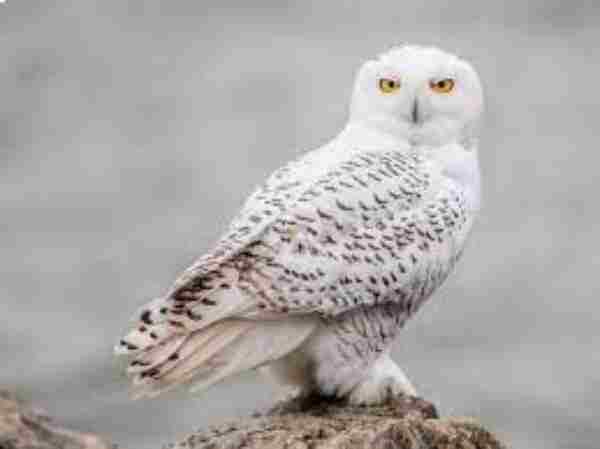
Snowy owls are unique birds known for their magnificent white feathers. These raptor birds stand at a height of 2.1 to 2.4 feet and weigh between 56 and 104 ounces. With a wingspan ranging from 50 to 57 inches, females tend to be larger in size.
Snowy owls are primarily found in freezing regions near the North Pole, making them challenging to spot. However, during the non-breeding season, they migrate to certain parts of Europe and North America.
When it comes to nesting, snowy owls construct their nests on the ground, often on boulders in Arctic hummocks. They prefer higher vantage points to keep a watchful eye on potential predators.
Like other owl species, snowy owls are carnivorous. Their diet consists of various small animals such as mice, voles, Arctic hares, and seabirds.
Great White Egrets
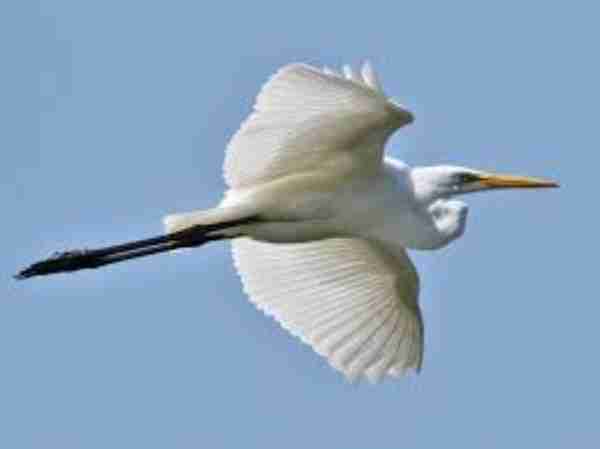
Great egrets are magnificent herons distinguished by their pristine white plumage that covers their entire bodies. These majestic birds can reach an impressive height of 3.4 feet and have an average weight ranging from 1.5 to 3.3 pounds. With a wingspan of 51.6 to 57.1 inches, they possess impressive wings.
In recent times, great egrets have expanded their range from southern Europe to the northern regions of the continent. They have long been present in Africa, the Americas, and Asia, so it is not surprising to find them in these areas. Their preferred habitats include mudflats, shorelines, ponds, marshes, lake borders, shallow coastal lagoons, estuaries, and riverbanks within forested areas.
When it comes to nesting, great egrets construct their nests in trees, usually 20 to 40 feet above the ground, or alternatively, 1 to 4 feet above the water in shrubs or cattails. These nests are built using small twigs, sticks, and various plant materials.
Great egrets have a diverse diet that primarily consists of fish, but they also consume aquatic insects, salamanders, crabs, and frogs. Additionally, they may include grasshoppers and rodents in their feeding repertoire.
White-Bellied Sea Eagles

Male white-bellied sea eagles have an average weight of 4.0 to 6.6 pounds and a length ranging from 26 to 31 inches. Females, on the other hand, are significantly larger, measuring 31 to 35 inches in length and weighing 5.5 to 9.9 pounds. Both males and females have a wingspan between 5.8 and 7.2 feet. These majestic birds feature white plumage on their belly, neck, and head, while their wings and inner wing tips display black or dark brown hues.
The range of the white-bellied sea eagle stretches from Sri Lanka and India, across southern China, and southward through Southeast Asia, Wallacea, New Guinea, and Wallacea, ultimately reaching Australia during migration. These birds are commonly found in coastal environments and terrestrial wetlands within both temperate and tropical regions.
White-bellied sea eagles typically establish their nests in tall trees or human-made pylons. The nests resemble deep and spacious bowls, lined with seaweed or grass and constructed using twigs and branches.
As carnivorous creatures, these white eagles primarily feed on aquatic creatures such as fish, sea snakes, and turtles. However, they occasionally consume mammals and other birds as well.
Gyrfalcons

The gyrfalcon, a formidable falcon species, shares a comparable size to the largest buteos. Male gyrfalcons weigh between 1.8 and 3 pounds, measure 19 to 24 inches in length, and possess an impressive wingspan ranging from 43 to 51 inches. Females, slightly larger and more robust than males, have a length of 20 to 26 inches, a weight of 2.6 to 4.6 pounds, and a wingspan of 49 to 64 inches.
Adapted to withstand harsh environments, the gyrfalcon thrives in subarctic regions, breeding in Greenland, Iceland, Europe, and North America. During the winter, they migrate to Southern areas, where their habitats include open fields, coasts, dunes, prairies, and shrub steppes.
Gyrfalcons often choose cliffs or repurpose the nests of other birds, such as golden eagles and ravens, as their nesting sites. These nests are constructed using a combination of branch debris and dry leaves.
As carnivores, the gyrfalcon primarily preys on other birds and mammals, displaying their remarkable hunting prowess.
Final Words
White birds come in all shapes and sizes, with each species having its own unique characteristics. Some of these birds, like the gyrfalcon, are able to survive even in the harshest of environments, thanks to their remarkable adaptability. The snowy egret, on the other hand, faced near-annihilation only to make a comeback through conservation efforts.
With so many interesting white birds to observe around the globe, it can be overwhelming to try and keep track of them all. But fear not! With the information provided in this blog post, you’ll be able to identify any bird from the list with ease the next time you’re lucky enough to see one up close.
Reference:
- https://www.allaboutbirds.org/guide/White_Ibis/id
- http://wiienvis.nic.in/KidsCentre/wbi_8378.aspx
- https://birdcount.in/whats-that-white-egret-sp/

Zahra Makda
Growing up enjoying the beauty of my village, a good passion for nature developed in me from childhood. Following my passion for the natural world, I have chosen zoology for my graduation, during my undergraduate degree, I participated in many nature trails, bird watching, rescues, training for wildlife conservation, workshop, and seminars on biodiversity. I have a keen interest in invertebrate biology, herpetology, and ornithology. Primary interests include studies on taxonomy, ecology, habitat and behavior.









